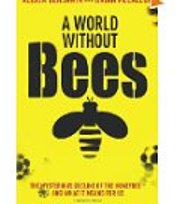|
|
“There is international trade in honeybees (Apis mellifera) and their hives need constant management to keep diseases under control. Despite this, The bumblebee (Bombus) is in global decline, something that threatens the productivity of farming. The growth of fruit, veg and other crops is dependent on having pollinators of all sorts available but bees are particularly important, the authors write. They decided to study whether disease transfer from managed bees might be putting species like the bumblebee under pressure.” The idea was first tested in the lab with infection experiments and then a large-scale field study was conducted across Britain and the Isle of Man. They investigated two common diseases in domesticated bees, deformed wing virus and a fungal disease. Genetic studies of the virus also showed that bees tested in shared foraging areas had related strains of the virus showing that there was ongoing disease transmission, the author said. “Our results provide evidence for an emerging pathogen problem in wild pollinators that may be driven by Apis,” the authors write. Ireland’s 101 native bee populations are also under considerable stress, said Dr Una FitzPatrick, an ecologist at the National Biodiversity Data Centre in Waterford. “A third of the Irish bee fauna is threatened with extinction,” she said. The primary cause for this was the loss of bee habitat due to increased urbanisation and more intensive agricultural practices, Dr FitzPatrick said. “There are just fewer places where a bee can make a home. We forget bees provide an essential service. We are totally dependent on them to pollinate our crops . . . . This is yet another stressor that bee populations don’t need.” So what can we do to protect our bees and consequently the human race? “ . . . letting wildflowers grow in road margins to make them more pollinator friendly. Just don’t cut the grass verges so often,” she said. That’s only the start. We may lose all the plants that bees pollinate, all of the animals that eat those plants and so on up the food chain It gets worse. We are losing bees at an alarming rate. Possible reasons include the loss of flower meadows, the crab-like varroa mite that feasts on their blood, climate change, and use of pesticides. Of the 101 types of “native” bees in Ireland 42 have decreased by 50% and 11 have decreased by 30%-50% since 1980. We need the bees: Shakespeare got it right,
Click on author's byline for bio and list of other works published by Pencil Stubs Online.
|





